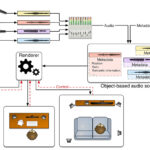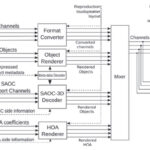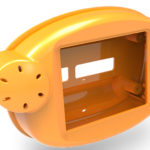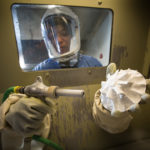As 3D printers become more ubiquitous and less costly, the idea of DIY 3D printing or additive manufacturing — for product development, prototyping and manufacturing — becomes increasingly attractive. Images and videos abound of shiny and sophisticated 21st-century industrial machinery creating a solid product from thin layers upon thin layers of material in succession bringing a digital file to life from screen to machine.
It’s a scenario that may make sense for the small shop or short-run manufacturing runs and can also be application-dependent. Of course, that also assumes you have the dedicated personnel trained well enough on operations and maintenance. And if you’ve never gotten past changing the toner in your office laser printer, don’t even go there.
Even in the above scenario, you may want to also consider an outside service bureau with the equipment and additive manufacturing core competencies. Or, you may be thinking of handing the entire work over after your design phase while you move on to developing your next product.
We asked Eric Utley, an application engineer with custom prototype and on-demand part production manufacturer Protolabs, what to consider when deciding between partnering with a service bureau or performing 3D printing on site.
What should designers consider when deciding whether to print their own prototype or engage with a service bureau?
If a product developer needs a part within hours or the next day, then printing it on site is often the only option. Having a 3D printer on site gives an avenue to alleviate such emergencies. The substantial majority of our customers have some sort of 3D printing capabilities on site but still use our services.
Typically, if a job has more requirements than what they can produce on site, they will come to us. If a part requires a niche material, tight tolerances, or high aesthetics, then it is best to utilize a service bureau. We also see customers using a service bureau for high volume jobs. I once visited a customer who ran the on-site 3D printing lab, and he cautioned the product developers not to be “that guy” that clogs all the on-site printing capacity with a large job and to use us instead.
What are the advantages and disadvantages of in-house 3D printing? How do cost and lead-time differ?
Having a 3D printer on site can have that capacity at your fingertips, but it is at a cost. A 3D printer is closer logistically to a mini machine shop than it is to a 2D paper printer. Besides the printer itself, you need someone to prep the CAD files, print the parts, remove the supports, and inspect the parts. The on-site 3D printing lab operates like a business-within-a-business and needs someone accountable for scheduling and the cost/benefit the lab provides the company. Lead times for small jobs can be faster than a service bureau, but due to capacity constraints, a service bureau will be faster on larger capacity jobs. The per-part price will appear higher for a service bureau, but that is mainly because all those secondary processes and their associated labor (file prep, finishing, inspection, etc.) are all baked into the per-part price.
What sort of training or education is necessary to operate a 3D printer?
This depends greatly on the 3D printing technology in question — for example, a desktop printer versus an industrial-grade 3D printer. For a desktop printer, you can potentially be printing within hours of installing the machine. However, there is a big chasm between building parts and building parts well. The learning curve of how to consistently build parts well is in the scale of months, if not years. There is a lot of technical know-how involved in supporting parts correctly, prepping the CAD file, identifying the best build orientation, etc. — and that is just in building the parts.
After the part is built, often support material needs to be removed and other secondary steps to get to the final part. There is a skill or even art involved in finishing the parts out and not potentially damaging them. Some 3D printing technologies require a cooling or heating cycle to prevent material warp, and that can be a science within itself.
For more industrial-grade professional systems, you can expect at least a solid week of training from the machine manufacturer to get to the point of producing parts. A complicated technology like DMLS (Direct Metal Laser Sintering) can take substantially longer than that.
What sort of technologies and materials does a service bureau offer that may be more difficult to learn or obtain for a designer?
A service bureau will almost always be able to offer a broader range of materials than an in-house printing lab. For most in-house printing labs, you would typically want to stick with “jack-of-all-trade” materials that can fulfill a wide range of uses and applications. However, those same materials cannot satisfy all needs. Usually, if the material needs more specific qualities, such as high-temperature tolerance, elastomericity or other unique properties, then utilizing a service bureau to make the part can be the only option. Service bureaus can offer those “once-in-a-while” materials that are needed but not often enough to warrant investing in for in-house printing. Service bureaus will also typically run the latest and most advanced industrial-grade equipment.
Going to a service for 3D printing is really no different than going to any other high-end professional to get a job done right. If you are restoring a vintage car and want the best paint job, you should go to the paint shop with the best equipment and most experience. If there is a need for a 3D-printed part that needs tight tolerances, high aesthetics or other high requirements, then getting it made by a service bureau is the lowest risk option to get that done.
Find more information about Protolabs 3D printing capabilities here.







Leave a Reply
You must be logged in to post a comment.